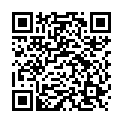|
|
|
| Module code: E910 |
|
2V+1U+1P (4 hours per week) |
|
5 |
| Semester: 9 |
| Mandatory course: yes |
Language of instruction:
English |
Assessment:
2 lab reports, project work
[updated 12.03.2010]
|
E910 Electrical Engineering, Master, ASPO 01.10.2005
, semester 9, mandatory course
|
60 class hours (= 45 clock hours) over a 15-week period.
The total student study time is 150 hours (equivalent to 5 ECTS credits).
There are therefore 105 hours available for class preparation and follow-up work and exam preparation.
|
Recommended prerequisites (modules):
None.
|
Recommended as prerequisite for:
|
Module coordinator:
Prof. Dr.-Ing. Stefan Winternheimer |
Lecturer:
Prof. Dr.-Ing. Stefan Winternheimer
[updated 12.03.2010]
|
Learning outcomes:
Students will be taught practically relevant aspects of power electronics and will learn about the structure and function of power semiconductor devices. After completing this course, they will be able to dimension the components needed for the most common power electronic circuits and will be able to calculate the material costs of a specific device.
[updated 12.03.2010]
|
Module content:
Power Semiconductor Devices:
Basic semiconductor physics
Power diodes
Bipolar junction transistors
Power MOSFETs
Thyristors
Insulated gate bipolar transistors
Practical converter design considerations:
Gate and base drive circuits
Losses in power devices
Heat transfer
Heat sinks
Design of magnetic components:
Magnetic materials and cores
Copper windings
Thermal considerations
Inductor design procedures
Transformer design procedures
Practice:
Switching behaviour of IGBTs and bipolar diodes
Operation of inductors and HF transformers
[updated 12.03.2010]
|
Teaching methods/Media:
Lecture notes, overhead transparencies, blackboard, SIMPLORER (student edition) CD-ROM, PC, video projector
[updated 12.03.2010]
|
Recommended or required reading:
Sze S.M.: Physics of Semiconductor Devices, 2nd Edition,
New York / Chichester / Brisbane / Toronto / Singapore: John Wiley & Sons, 1981
Mohan, Undeland, Robbins: Power Electronics, 2nd Edition,
New York / Chichester / Brisbane / Toronto / Singapore: John Wiley & Sons, 1995
[updated 12.03.2010]
|


